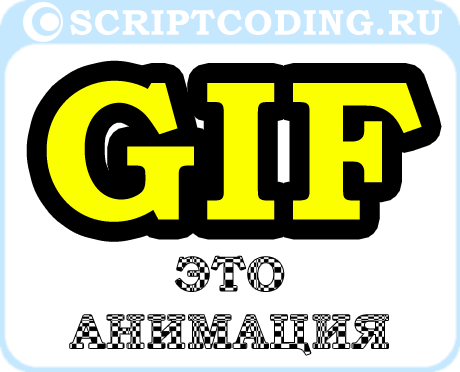Welcome to the blog of everyone on the blog site. Today I want to tell you about the three most popular formats of pictures that are used on the vastness of the worldwide Internet, on various sites, blogs and not only.
This topic is very important, because different formats are meant for different purposes. If you know all the nuances, you can easily reduce the load on your hosting because the load (weight) of different formats is different.
Picture formats png, gif and jpeg
On the Internet today, there are almost no sites on the pages of which there were no graphic elements. To date, the most popular image formats are JPEG, PNG, GIF. All of them differ in their intended purpose. It's no secret that the page should "weigh" as little as possible. The size ("weight") of the graphics on the site depends both on image formats, and on their sizes. Of course, different compression methods are used to reduce the images, which can work both with the reduction of image quality and without it.
To get the best possible image size for the web, you should use targeted ones that will not create unnecessary load in users' browsers. You can use all the known photoshop, but I saw recommendations for Adobe's Fireworks program. Next, we will analyze three popular image extensions.

PNG (Portable Network Graphics) - Originally developed as an alternative to the expansion of GIF. Initially, PNG was intended for use on the web. To date, pictures pNG format have not gained much popularity. To be honest, I started using PNG images in his blog, when he moved to the transparent background of the picture. When compressing this format, we will not get any loss in the quality of the color and this gives the advantage of storing unfinished images in PNG. With PNG variations, you can easily replace JPEG and GIF:
- PNG 8 - Eight indicates that when saving, no more than 256 colors will be used (by analogy, as in GIF). In general, PNG 8 was designed to replace GIF images, but it differs in that it can not display the animation in any form. You can use low-level transparency.
- PNG 24 - 24 means that a 24-bit color palette is used. This variation was intended to replace format JPEG. As in the JPEG format, PNG 24 preserves the brightness and shades of colors in the photos. This format of pictures uses about 16.7 million colors because of what came to replace the full-color images, as in JPEG. It supports multilevel transparency, which allows you to make a smooth transition from a transparent area to a color area.
- PNG 32 - similar to variation 24, but differs in that you can specify a change in the degree of transparency, and this gives a clearly visible image on any web page with any background.
If you take into account the load on the web page, the size of PNG 8 is almost half the size of PNG 24, but this is not surprising, because they were intended to replace the formats GIF and JPEG (the quality corresponds to the size).

GIF (Graphics Interchange Format) Is the first historical format used in. Even today, this expansion is very popular. Pictures of the GIF format are small, so the load on the server is minimal. Feature of GIF is the presence of animation .
The small size of the images is explained by the fact that the GIF can have no more than 256 colors. It is because of this that GIF is not used to display full-color images and photos.
The principle of GIF animation is that GIF has a container, where there is more than one image, and several and the time is indicated for showing the change of the picture to each other. After the last picture, the first will begin. Thus, a GIF animation is created.
A further advantage of using GIF will be the primitive transparency of images. For any pixel, you can set only two values - transparent and opaque.

JPEG (Joint Photographic Experts Group) - this extension is the property of associations of American photographers (you can understand from the abbreviation). It was created for storing full-color images, transferring good image quality.
Using JPEG can lead to heavy loads. If you need to transfer the quality (in detail) of the photo on the website, then of course you can not do without JPEG. If you blog, then there is no need for using JPEG, because the size of JPEG images is very high in weight, which puts a strain on hosting.
Let's discuss various image formats. jpg, bmp, gif, png, tiff, ico, do you know these? With so many varieties, it's easy to get confused and store your images in a non-optimal way. Than it is dangerous? For example, by using "lossy compression" you can lose the quality of images; In addition, unprocessed, "raw" images can take up a lot of disk space.
Even more significant is the problem for webmasters. How to make the images on the site look beautiful, but they did not take up much space and were quickly downloaded? I myself have only recently become interested in this issue, so in my old articles you probably will find unoptimized images (I'm going to tackle them, but I have not had it yet). Nevertheless, choosing an image type is a task that must be solved before you upload it to the Internet.
In this article, we will discuss the advantages and disadvantages of different types of images, and also learn how to convert them using Windows-built tools.
And further. In the process of searching for information about various formats, I came across strange words that sounded like photos and photobanks. Go to the link, read. It turns out that there are some kind of storage facilities on the Internet where very interesting photos can be obtained very cheaply, and sometimes free of charge.
BMP format
The simplest image format. It allows you to store multi-color images (now you need to make a digression about how the color of a dot in the image is stored.) As is well known, any color can be decomposed into three components - red, blue and green, so to describe the color you need only describe the intensity of these three components. only in what is this intensity, it is clear that this is some number, but how much it can be large? There is no unambiguous answer to this question, depending on the type and parameters of the image, it can vary.Either way, about ychno talking about the color depth of the image -. the number of bits which are responsible for the color of one pixel, for example, if this number - 8, we can store 2 ^ 8 = 256 different colors). So bmp allows you to use up to 48 bits per pixel (the web standard is 24).
Bmp has a compression mechanism without loss of quality, but it is very weak. Generally speaking, I do not see any advantages with this format. Why? We look further
GIF Format
Very interesting format. The depth of color is not pleasing (8 bits), but for some tables this is enough. But this format has the concept of transparency. One of 256 colors can be specified as transparent, and when displaying a picture, for example, on a web page, instead of this color, the background will be visible. Further, gif again has a lossless compression, and the level of this compression is significantly better than that of bmp.
But that's not all - gif images have animation support. You can create a series of images that will alternate with each other cyclically, and they will all be stored in the same gif file. Therefore, the gif format is ideal for avatars and small animated images - you do not need to do it in order to play the animation.
PNG Format
The png format does not support animation, but it exceeds bmp on the other hand, and not even with one. With the support of all the same number of colors per point (48 bit maximum), this format has very good compression without loss of quality. Therefore, pictures of the png format do not lose anything compared to bmp, but they can be much smaller.
Another advantage of png is the so-called alpha channel. In addition to indicating the intensity of blue, red and green, each point can specify the level of transparency. Thus, we get not only unconditional transparency (there is - no) as in gif, but the ability to vary the transparency of different parts of the image. This property allows you to make smooth transitions - a clear image in the middle, gradually turning into a background. Unfortunately, not all correctly work out alpha transparency.
JPG Format
Let's go to the most famous format with loss of quality, jpg. Loss of quality means that irreversible compression is applied - it is impossible to restore the original image from jpg. That is, generally speaking, the resulting pattern is not identical to the original one. But if you install weak level compression, these differences will be unimportant, and the volume may already be greatly reduced. The higher the compression level, the smaller the volume and the more distorted the pattern.
The jpg format is good for storing photos. The photos contain so many different colors that they are very hard to compress png. At the same time, they can often be significantly reduced by covering in jpg, but with virtually no loss of quality. The maximum number of bits per pixel is 24.
TIFF format
The format of all formats, the container, allows you to use other formats, lossy and lossless compression, 192 bits per pixel. Disadvantages - the complexity of working with the format and almost no support for browsers. If you are not a professional designer, do not use tiff.
ICO Format
Almost and not the format. The structure most closely resembles bmp, but it supports transparency (like gif). This format allows only small sizes of drawings, like 16 by 16 pixels. It is used only in places where small pictures of fixed size are needed, for example, shortcuts on the desktop or so-called favicon - pictures in the browser next to the site name.
Convert formats
Let's sum up the comparison of image formats. First a small table:
Thus, for small special-purpose pictures, you can use ico, if you need animation, then your choice is gif, for photos it is good to use jpg, and for diagrams and images with a small number of colors - png. I do not recommend bmp format at all, and tiff is left for professionals.
Convert the same image formats is very simple. Right click on the picture, select "open with - Paint". A picture opens, and in the "file" menu there is an option "save as" where you can select the image format.
If you want to work with drawings at a more advanced level, then you will need good program to work with images. Personally, I recommend gimp - a free analog of Photoshop. But about this - another time. Stay tuned!
Greetings to friends! In our life, we are constantly confronted with images, when photographing, creating a site, scanning, printing. What image format is better for you?
From the format in which the file is saved depends on the quality of the image, the convenience of its further editing.
With the development of computers and the Internet, new formats for recording images into files appeared. Each format has advantages and disadvantages.
In this article I decided to try to figure out which format of the image is better and tell about the most common graphic formats - JPEG, TIFF, PNG, and GIF.
Which image format is better?
JPEG format
Digital cameras and web pages usually use JPEG files - its algorithm compresses data very well and the resulting file is small. However, JPEG uses a lossy compression algorithm, which may be a major drawback.

The small size of the JPEG file is at the expense of image quality. The degree of compression can be set in the settings of graphics programs - the lower the quality of the image file and vice versa the higher the quality, the larger the file size.
JPEG is almost the only format that uses lossy compression, which allows you to make smaller files of lower quality. There is a lossless compression mode - lossless JPEG.
This format is used in cases where a small file size is more important than the maximum image quality (, email, transfer to memory cards, etc.). The JPEG format is good enough for most cases, the main thing is not to overdo it in compression.
Always remember that re-editing a JPEG file degrades picture quality, artifacts appear, so I recommend always saving original images that can be compressed later.
TIFF format
The lossless format used for raster images is considered the most better format for commercial work. It is used for scanning, for printing for high-quality printing, for recognizing text, for sending faxes. Files in TIFF format are much larger than their analogs in JPEG, and can be written without compression or with lossless compression.
The TIFF format allows to save several layers, which is very convenient for further editing, and in contrast to JPEG can have a resolution of 8 or 16 per channel. TIFF is the most universal, and is usually used to store original images, which can later be edited. But keep in mind that browsers do not display TIFF files.
GIF Format
This format was developed by CompuServe in 1987 for the first 8-bit video cards of the computer and was intended for transmission over a dial up (modem) connection. At one time it was the most common format on the Internet. GIF uses lossless compression LZW, and very well compresses images in which there are many uniform fills (banners, tables, logos, schemes).
The depth of color of this format does not please us, only 8 bits (256 colors maximum) and it is not recommended to use it for storing photos (photos have 24 bit depth of color).
This format supports the animation of images, which is expressed in the change of static pictures after a certain period of time, which can be set. Animation can be done cyclically, which is successfully used in the production of banners and avatars.
PNG Format
It was created relatively recently to replace the outdated GIF (browsers show both formats), and to some extent more complex TIFF format. PNG is a raster format using lossless compression, does not support animation, and can have 48 bit color depth.
One of the advantages of this format is that you can specify the level of transparency for each point, which allows you to make smooth transitions from a clear image to the background. The main application is the use of the Internet and editing graphics.
Types of files, depending on the purpose of use:
| Photographic images | Graphics, logos | |
| Properties | Photos 24-bit color and 8-bit b / w | Graphics with lots of solid colors, with a small number of colors (up to 256 colors), with text or lines |
| Best quality | TIFF or PNG (with lossless compression) | PNG or TIFF (with lossless compression) |
| Smallest file size | JPEG with high quality factor | TIFF or GIF or PNG (graphics / logos without gradients) |
| Compatibility (PC, Mac, Unix) |
TIFF or JPEG | TIFF or GIF |
| Worst Choice | GIF 256 colors (very limited color, and file size more than 24-bit JPEG) | Compression JPEG adds artifacts, smears text and line edges |





